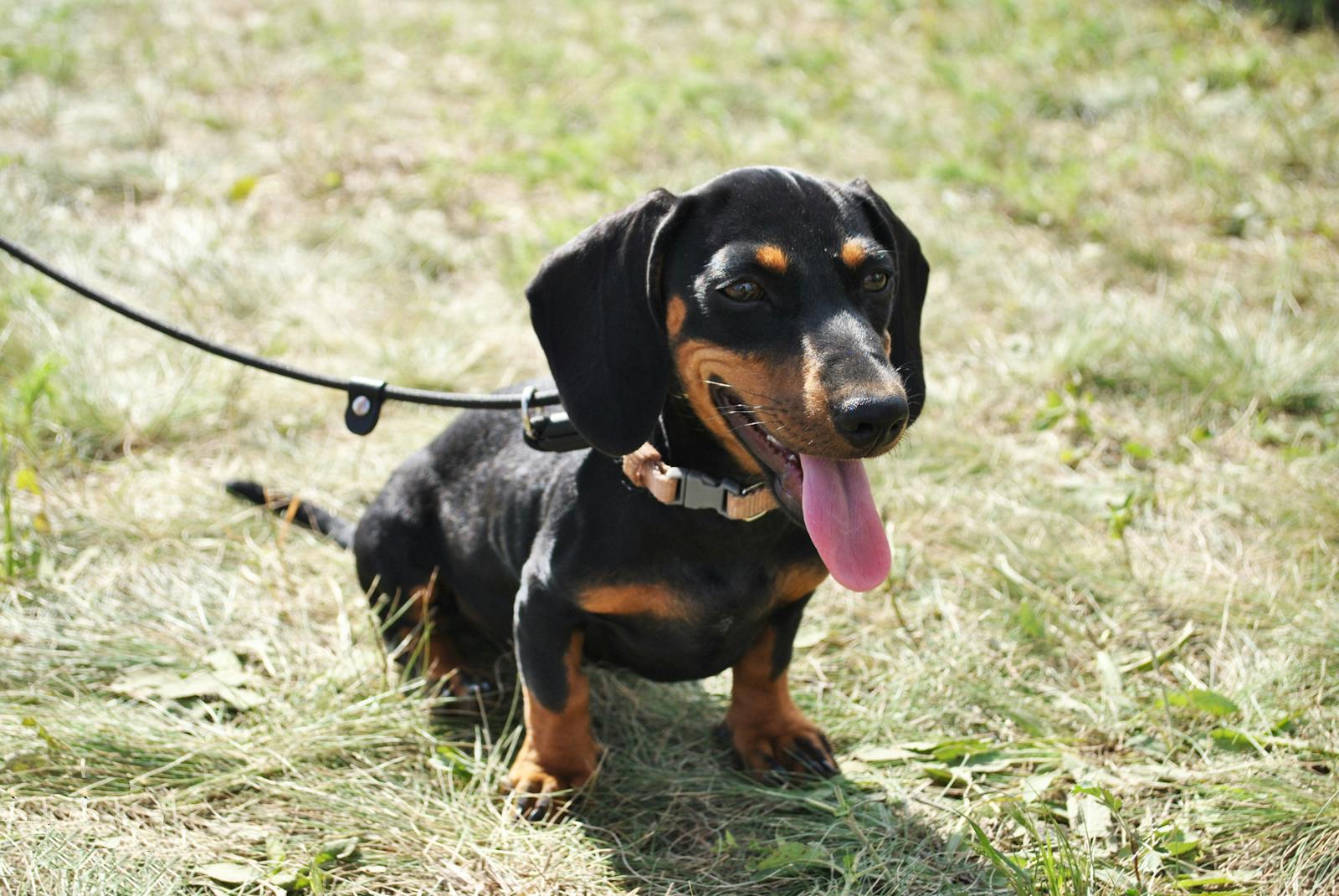Training a Dachshund can be a rewarding experience for both you and your furry companion. Dachshunds, known for their unique appearance and lively personalities, are intelligent dogs that respond well to training when done correctly. Whether you have a new puppy or an adult Dachshund, following these 10 easy steps can help you train a dachshund dog effectively.

Step 1: Understand Dachshund Behavior
Before diving into training, it’s crucial to understand Dachshund behavior. Dachshunds are intelligent but can also be stubborn. They are curious, energetic, and can have a strong prey drive. Knowing these traits will help you tailor your training approach to suit your Dachshund’s personality.
Step 2: Start Early
Early training is essential for Dachshunds. Begin training your Dachshund as soon as you bring them home, whether they are a puppy or an adult. Early training helps establish good habits and prevents undesirable behaviors from developing.
Step 3: Use Positive Reinforcement
Dachshunds respond best to positive reinforcement techniques. Use treats, praise, and rewards to encourage good behavior. When your Dachshund performs a desired action, such as sitting or staying, immediately reward them to reinforce the behavior.
Step 4: Be Consistent
Consistency is key in training any dog, including Dachshunds. Use the same commands and cues consistently, and ensure that all family members are on the same page with training methods. Inconsistency can confuse your Dachshund and hinder progress.
Step 5: Focus on Basic Commands
Start with basic commands such as sit, stay, come, and down. These commands form the foundation of obedience training and are essential for managing your Dachshund’s behavior in various situations.
-
- Sit: Hold a treat above your Dachshund’s nose and slowly move it upwards. As their head goes up, their bottom will naturally lower into a sitting position. Say “sit” as they do so, then reward them.
-
- Stay: Begin with your Dachshund in a sitting position. Hold your hand up, palm facing them, and say “stay” while taking a step back. If they stay put, reward them. Gradually increase the distance and duration of the stay.
-
- Come: Use a happy tone and call your Dachshund’s name followed by “come.” When they come to you, reward them with praise and treats. This command is vital for recall and safety.
-
- Down: Start with your Dachshund in a sitting position. Hold a treat in front of their nose, then slowly lower it to the ground while saying “down.” As they follow the treat, their body will lower into a lying down position. Reward them when they achieve this.
Step 6: Socialize Your Dachshund
Socialization is crucial for Dachshunds to become well-adjusted and friendly dogs. Expose them to various people, animals, environments, sounds, and experiences from a young age. Positive interactions during socialization help prevent fearfulness and aggression.
Step 7: Address Undesirable Behaviors
Dachshunds, like any dog, may exhibit undesirable behaviors such as barking excessively, digging, or chewing. Redirect these behaviors by providing appropriate outlets. For example, if your Dachshund digs in the yard, create a designated digging area with loose soil or sand where they can dig freely.
Step 8: Use Crate Training
Crate training can be beneficial for Dachshunds, providing them with a safe and comfortable space. Introduce the crate gradually, using positive reinforcement to associate it with positive experiences. Use the crate for short periods initially and gradually increase the duration as your Dachshund becomes accustomed to it.
Step 9: Exercise Regularly
Dachshunds are active dogs that require regular exercise to stay healthy and happy. Provide daily walks, playtime, and mental stimulation through interactive toys or games. A well-exercised Dachshund is less likely to engage in destructive behaviors out of boredom.
Step 10: Be Patient and Persistent
Training takes time and patience, so be consistent and persistent in your efforts. Celebrate small successes along the way, and don’t get discouraged by setbacks. With dedication and positive reinforcement, your Dachshund will learn and thrive.
In conclusion, training a Dachshund involves understanding their behavior, starting early, using positive reinforcement, being consistent, focusing on basic commands, socializing, addressing undesirable behaviors, crate training, providing regular exercise, and maintaining patience and persistence. By following these 10 easy steps, you can build a strong bond with your Dachshund and help them become a well-behaved and happy companion.




